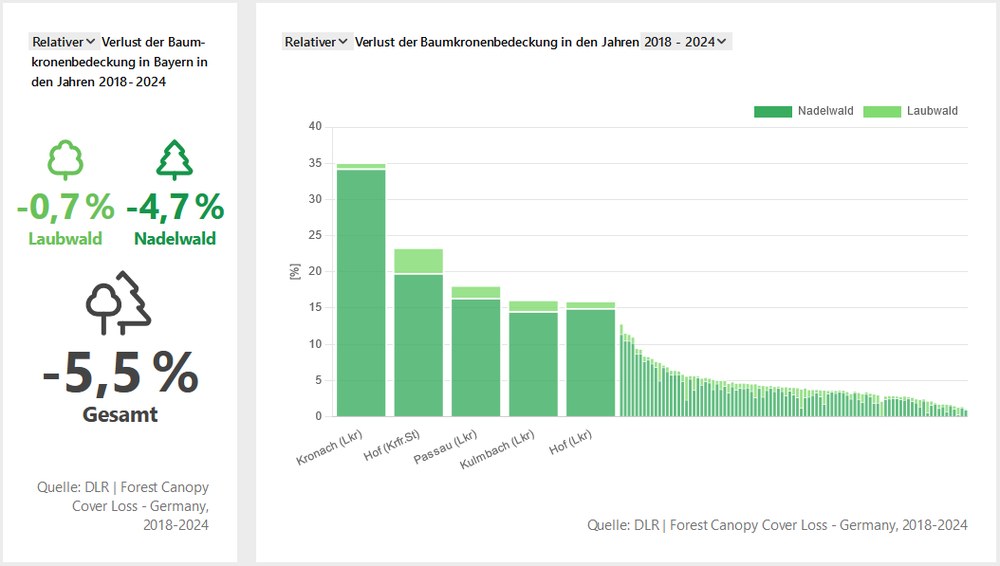Forestry

Drew Dau / unsplash
Forestry in Bavaria: challenges and perspectives
Roughly one-third of Bavaria is covered by forests. These forests provide habitats for countless animal and plant species, regulate the climate and soil water balance, and remove carbon dioxide from the atmosphere. Around 190,000 people in Bavaria work in the forestry sector, generating annual revenues of about 40 billion euros.
However, climate change and the increasingly hot and dry summers of recent years are placing significant stress on forest ecosystems. The consequences include reduced growth, thinning canopies, increased pest infestations, and rising tree mortality. Weakened forest stands are also more susceptible to wind and snow damage. Spruce, still widely cultivated in monocultures in Bavaria, is particularly vulnerable to drought and secondary damages such as bark beetle infestations. But beech, pine, and oak are also facing growing challenges.
Because forests, due to their long life cycles, are slow to adapt to rapid climate change, targeted forest transformation is necessary. A resilient, structurally diverse mixed forest composed of climate-tolerant and site-appropriate tree species can not only ensure sustainable forestry but also make a valuable contribution to mitigating climate change and preserving biodiversity.
EO4CAM: Earth observation for sustainable forest development
In the forestry topic, the EO4CAM project is analyzing the condition of Bavarian forests. At regular intervals, these are characterized in terms of their extent, structure, vitality and temporal and spatial dynamics using earth observation data.
In addition, remote sensing and climate data-based drought stress indicators are used to compare different forest areas against the background of climatic changes. These analyses provide valuable insights for future scenarios and serve as a basis for decisions in forestry planning, e.g. in forest conversion, which can be implemented by the Bavarian forestry authorities.
Selected pilot regions, such as the Rhön biosphere reserve, will also be analyzed in more detail. Among other things, it is planned to model the past and future landscape water balance in order to create a basis for adaptation measures in flash flood management in cooperation with regional stakeholders. The forest plays an important role here as a natural water reservoir.
The aim of EO4CAM is to provide customized remote sensing products for forest owners and forestry authorities in Bavaria in order to contribute to sustainable forest development in the context of climate change. The map products and analyses are discussed with the forestry authorities and other stakeholders from the forestry sector at regular meetings.

DLR / Forest Canopy Cover Loss - Germany 2018-2024
